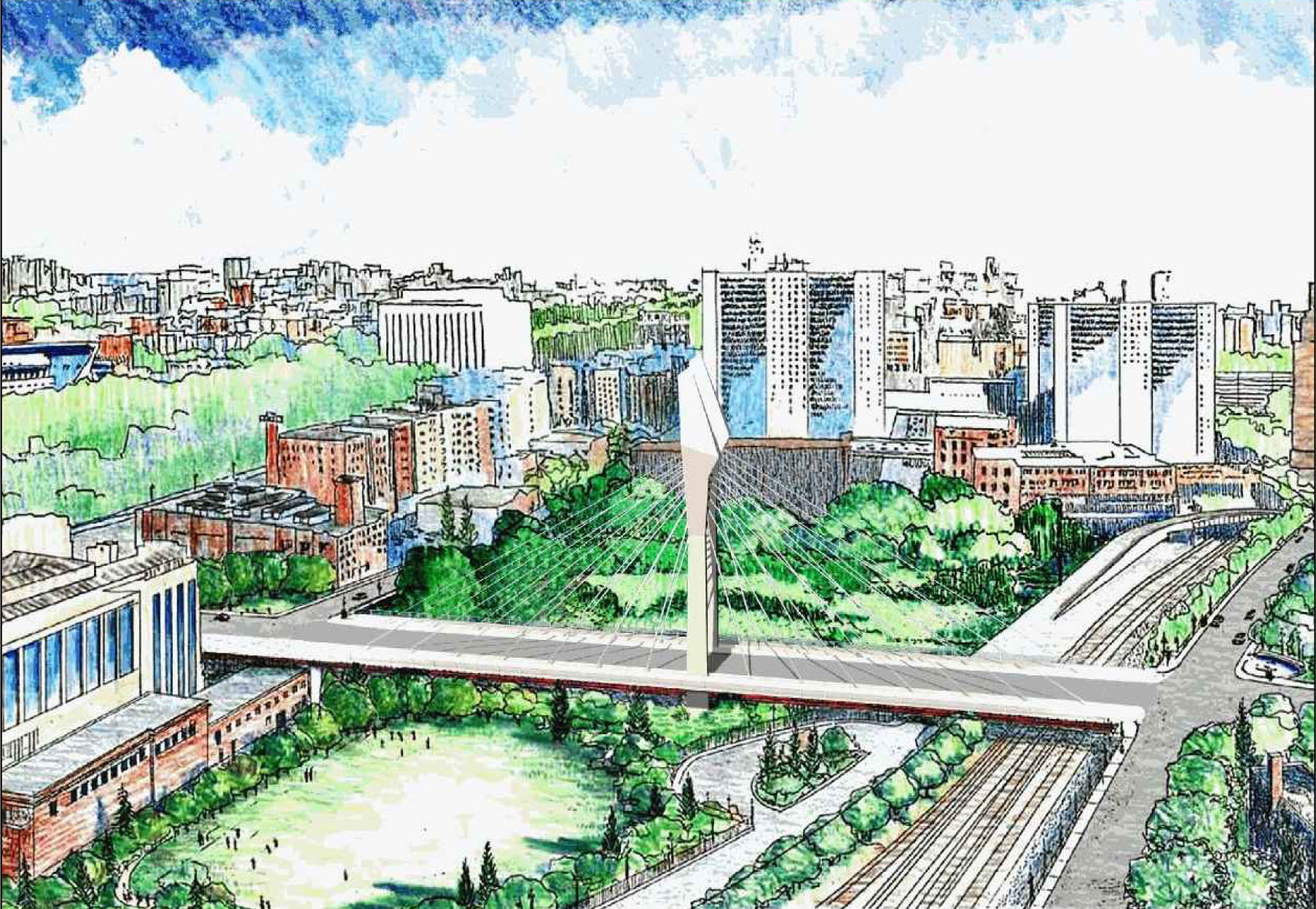
Opposition, delays and ballooning costs at East 153rd Street
For nearly 15 years, the city has planned to build a new bridge across the train tracks at East 153rd Street in Melrose.
The new span would relieve congestion, shorten commutes and unite the neighborhoods on either side of the tracks, planners said. And it would be gorgeous—a landmark brightening a run-down area.
But since the city put the project on the docket in 2003, its budget has quadrupled to more than $130 million, and construction has been pushed back. It’s now scheduled for 2025, 33 years after the bridge it’s to replace was torn down.
Some residents don’t care if it never gets built.
“I don’t think it’s necessary,” said Joel Rodriguez, who grew up a couple blocks from the old bridge.
Community gardeners, working land originally set aside for the bridge, oppose its construction.
But Ed García Conde, a local blogger and activist says the bridge is necessary. He points to the traffic that’s grown along with the area’s population—which jumped 10 percent from 2000 to 2010, according to census data.
The resulting fumes are a menace to public health, Conde said in an interview. And he deplores the gridlock that forced him to give up his car two years ago.
“It doesn’t have to be this beautiful, grandiose structure,” Conde said in an interview. “We just desperately need an additional crossing.”
Nos Quedamos, the Melrose-based community development corporation, opposes the bridge precisely because of the traffic. Anthony Winn, the organization’s chief operating officer, said a new crossing would perpetuate a broken, car-centric model of urban planning.
“Most Bronx residents don’t own cars,” he said. “If there’s an absence of a roadway then keep it that way.”
The tracks for Metro-North’s Harlem and New Haven lines have long cut the area in two. To the west the Grand Concourse and Franz Sigel Park anchor a neighborhood where census data show that people make about twice as much as those on the eastern end, by Park Avenue, which is dominated by the Melrose Houses, a cluster of public-housing projects.
The bridge would bring housing for the sort of families who live in Concourse Village—and the businesses they patronize—to the Melrose side, argues José Rodriguez, the district manager of Community Board 4, west of the tracks, a longtime advocate for the bridge.
“This bridge would mean a lot,” said Rodriguez.
The new bridge was supposed to be a lot more than a way to get to the other side. It was supposed to be a “landmark” in a poor neighborhood “that currently lacks aesthetic appeal,” the Department of Transportation wrote in a grant proposal in 2009.
The award-winning design called for the city’s first big cable-stayed bridge, with two towers in the middle, like the masts of a ship, supporting cables down to the roadway, forming successively larger triangles.
“These aesthetics are important,” said former Bronx Borough President Adolfo Carrión, who supported the project. “They send a signal that we care” about local people, he said in an interview.
So far, the DOT has spent about $10 million on the project: $5 million buying and razing two buildings to make way for it, and the rest on planning, according to the 2009 grant proposal.
Planning documents from 2004 pegged the cost at $33.9 million. The 2009 proposal, the most recent, made no significant design changes, but budgeted the bridge at $134.6 million.
Hearing that price, Community Board 4’s Rodriguez sounded less sure about its value. Carrión, who left office in 2009, said he didn’t know why the budget had quadrupled.
“It seems a bit out of whack. It’s something I’d have to know more about,” he said.
The current Bronx Borough President, Rubén Díaz Jr., has supported the project in the past, but did not respond to requests for comment. The DOT would not discuss the project’s budget, except to say that it is “currently unfunded.”
In an email, DOT spokesman Nicholas Mosquera said the agency is still committed to “improving connectivity of local streets in the area when funding is available.”
The city bought and demolished two buildings, housing a car wash, an elevator company and a Baptist church to make way for the bridge. But when what the DOT called “budgetary constraints” pushed construction back to 2022, it decided to turn the site into a community garden, which opened in June.
Oliver Claxton, busy building a greenhouse at the garden one afternoon this fall, said that there are about 30 people working plots there so far.
Claxton, who works in construction, wants to build a windmill, install solar panels, and get permits for an electrical system, partly because he believes the improvements would make it harder to evict the gardeners to build the bridge.
“How can you get the community involved in gardening and then uproot us?” he asked.
When the permit for the garden was announced, “the board was not happy,” said Rodriguez. The delays in the bridge project, he said, are a pill the area has to swallow.
“I try to be respectful to my colleagues in government, but, what’s the game here?” he said.


As a resident of the Grand Concourse side, I am not excited about the prospect of a bridge. It will only lead to increased vehicular traffic in the area and make the streets less pedestrian friendly. I would much rather see that money spent towards beautification of East 156th Street. A lot of people don’t take that crossing because it is sketchy outside of school hours.
How about the same design, instead designated pedestrian/bike only? Should be cheaper to construct too.